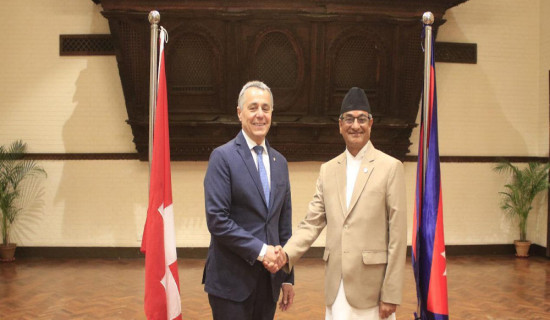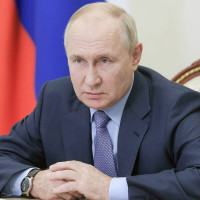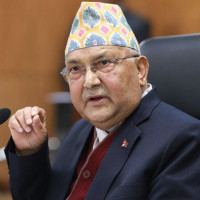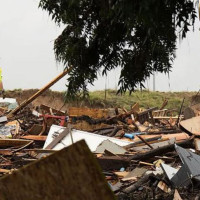- Monday, 7 July 2025
'Top Gun: Maverick' filmmakers drive into Formula One, with Brad Pitt and Lewis Hamilton
Los Angeles, May.1: "Top Gun: Maverick" filmmaker Joseph Kosinski came to Formula One like many Americans: "Drive to Survive."
In that popular Netflix series, he saw the potential for a cinematic event, full of immersive thrills, the high stakes of the competitive racing world and the idea that your teammate could be your greatest rival.
The movies have loved car racing since their earliest days, and the popularity of F1 has exploded in recent years. Giving it the "Top Gun" treatment made sense. But it would take nearly four years for that dream to become "F1," which is speeding into movie theatres on June 27.
It was a complex operation that would involve unprecedented coordination with the league, ground-breaking innovation in camera technology, and letting one of the biggest movie stars in the world, Brad Pitt, drive a real race car at 180 miles an hour on film. Many, many times.
Hollywood, it turned out, was a little easier to convince to make the film than the league. By the time Kosinski and producer Jerry Bruckheimer approached them, Pitt had already agreed to star and they'd decided to go with Apple to help make the movie at the level they needed, with the guarantee of a robust theatrical release (which Warner Bros. is handling). Then came the Formula One meeting.
There were many concerns: About anything going wrong, accidents, and the question of the villain. But, the filmmakers explained, this story wasn't about a villain. It's a competition between two drivers — a younger driver (Damson Idris) and an older driver (Pitt) trying to make him better.
Bruckheimer said it took almost a year to get the league on board, and then they had to go around to the individual teams to explain it to them as well. But once everyone bought in, they committed and opened their world to the filmmakers.
Among the things they got to do: Build a garage at the Grand Prix for their fictional team; Drive on the track during Grand Prix weekends in front of hundreds of thousands of spectators; Put their Formula One cars on the track with the film's cars (and drivers); Have Pitt and Idris stand at the end of the national anthem in both Silverstone and Abu Dhabi; And sit in on drivers meetings and technical briefings.
In true "Top Gun" spirit, part of "doing it for real" meant trying to create the experience in the driver seat for the audience. Seven-time champion Lewis Hamilton, who was involved in the film from the earliest days, told Kosinski that he'd never seen a film that had really captured what it felt like to be in one of those cars.
During "Top Gun: Maverick," they had six Sony cameras inside the cockpit. Here, engineers were able to slim those down to about a quarter of the size (he estimates a 10x10 cm cube). Panavision also developed a remote control that allowed director of photography Claudio Miranda to pivot the cameras left and right, which they didn't have on "Maverick."
They had 15 camera mounts built into the cars and were able to run up to four at a time keeping the weight penalty to a minimum, and the close-ups real.
When Hamilton first saw some of their racing footage cut together, Kosinski got a confidence boost.
"He smiled and said, 'It looks fast,'" Kosinski said. "I was like, 'Oh, thank God.' If Lewis says that we're in a good place."
Kosinski knew Pitt liked cars. About a decade ago he, Tom Cruise and Pitt actually developed a car movie that never came to be. Plus, he said, "I just felt like it was a role that I always wanted to see him play."
The character is fictional driver named Sonny Hayes who was "the greatest who never was." A phenomenon in the 1990s, he was destined to be the next world champion before an accident at a Grand Prix ends his Formula One career.
The audience meets him driving the midnight shift at the Daytona 24 hour race where he meets his old teammate and now Formula One team owner (Javier Bardem) who asks him to come back to help them win one race to save them from being sold.
After the pitch, they went to the racetrack with Hamilton and Pitt "was hooked."
Pitt trained for three months before cameras started rolling to get used to the physical demands of the precision vehicles. He and his co-star really drove the cars at speeds up to 180 mph, and sometimes in front of a couple hundred thousand people.(AP)





-square-thumb.jpg)










